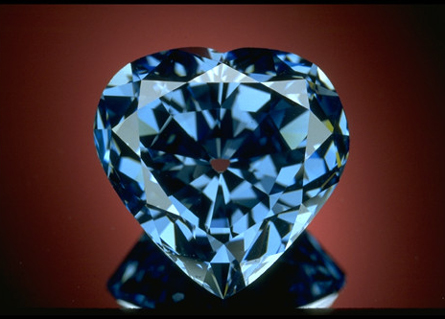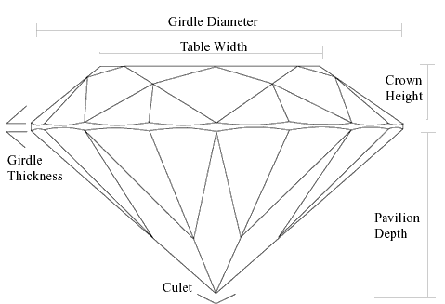Diamond Cut
Cut has more effect on a diamond's beauty than any of the other 4 C's: clarity, carat and color.

Diamonds glitter in light more than any other stone when they are skillfully cut and polished, and the grader must analyze the cut as part of the grading process.

The diamond cutter must study the rough diamond carefully to determine the best approach to cutting. If he does a poor job, the diamond will appear lifeless. If he does a good job, it will sparkel with life.
For instance, if the pavilion is too deep, the diamond will seem dark, but if it is too shallow, reflections from the girdle will be apparent through the table. If the table is too large, its reflection will overpower and the fire of rainbow colors will be reduced. If the girdle is too thick, the stone will be difficult to set securely in a mounting. If either the girdle or the crown are too thin, the diamond will be subject to chipping.
Cutters try to save as much of the rough diamond material as possible, while producing the most attractive result.
Polish is a term that describes the surface condition of the diamond. Skill is also required to obtain a good result without burning the surface of a facet, or causing tiny scratches. Most defects caused by polishing can be removed by a second polishing, without reducing the weight of the stone very much.